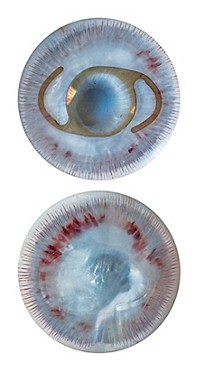Advertisement
Grab your lab coat. Let's get started
Welcome!
Welcome!
Create an account below to get 6 C&EN articles per month, receive newsletters and more - all free.
It seems this is your first time logging in online. Please enter the following information to continue.
As an ACS member you automatically get access to this site. All we need is few more details to create your reading experience.
Not you? Sign in with a different account.
Not you? Sign in with a different account.
ERROR 1
ERROR 1
ERROR 2
ERROR 2
ERROR 2
ERROR 2
ERROR 2
Password and Confirm password must match.
If you have an ACS member number, please enter it here so we can link this account to your membership. (optional)
ERROR 2
ACS values your privacy. By submitting your information, you are gaining access to C&EN and subscribing to our weekly newsletter. We use the information you provide to make your reading experience better, and we will never sell your data to third party members.
Materials
Mapping Eye Membranes
A better understanding of the morphology of a membrane in the eye could lead to better surgical tools
by Celia Henry Arnaud
July 12, 2010
| A version of this story appeared in
Volume 88, Issue 28
A better understanding of the morphology and topography of a membrane in the eye could lead to better surgical tools for treating some blinding conditions, according to a paper in Langmuir (DOI: 10.1021/la101797e). Removal of the internal limiting membrane, which separates the retina from the vitreous, with microforceps or roughened scrapers is a treatment for conditions such as macular holes. But removing the membrane without damaging the retina is difficult. Albena Ivanisevic of Purdue University and coworkers used an atomic force microscope to analyze internal limiting membranes removed from patients with diabetic retinopathy. They found heterogeneous surfaces composed of globular structures, aligned fibrous structures, and disordered fibrous structures. The fibrous structures might help distinguish between disease and healthy states, the researchers note. In addition, adhesion between the AFM tip and the membrane increases when the tip is chemically modified. Thus, improving the adhesion between the surface of surgical instruments and the membrane could increase treatment success, they suggest.





Join the conversation
Contact the reporter
Submit a Letter to the Editor for publication
Engage with us on Twitter